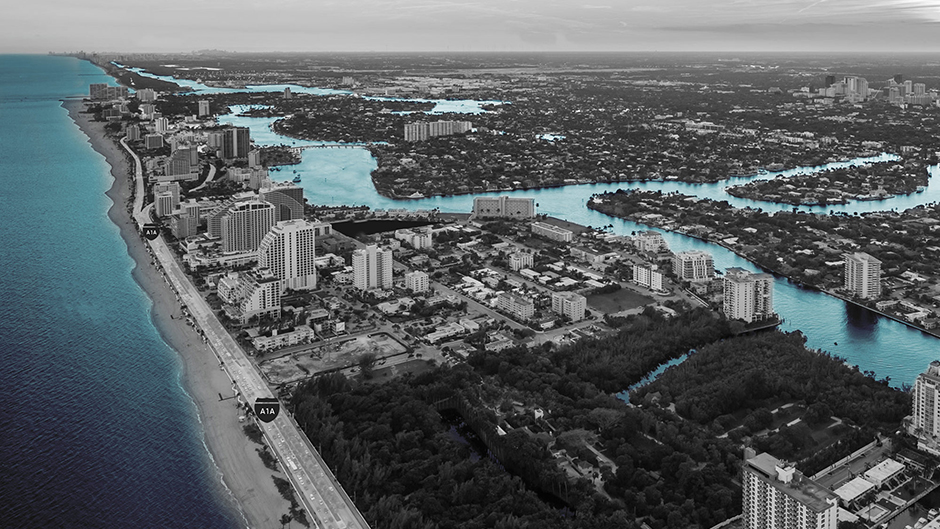The Urban Land Institute is drafting a plan for the Arch Creek Basin, a mostly low-lying area straddling 2,800 acres and four municipalities, as well as unincorporated Dade County, around one stretch of the railroad. Primarily poor people of color, the residents of Arch Creek face a severe threat from sea-level rise—one that could eventually force them to abandon the area. The development would be flood-resistant and transit-oriented, dense with mixed-use buildings and affordable housing, but also with a health clinic, backup generators, and other resources that could come in handy during disasters.
At a charette in November, designers Gustavo Sanchez-Hugalde, Max Zabala and University of Miami professor Sonia Chao presented their idea for a flood-resistant transportation hub at Northeast 125th Street. It would be transit-oriented development, dense with mixed-use buildings and affordable housing, but also with a health clinic, back-up generators and other resources that could come in handy during a disaster.
“Think of these as not just transit but resilience stations,” said Chao.
In the long run, South Florida’s scarcity of higher ground could also make its elevated areas more valuable as waters rise. That could exacerbate gentrification in minority neighborhoods with relatively high elevations like Liberty City and Little Havana.
“It’s a matter of time until investors will head for the higher land,” said James Murley, chief resilience officer for Miami-Dade County. But climate change isn’t forcing people out of their homes just yet. Asked if climate change is a driving force for gentrification in Miami, Murley is skeptical, but others are starting to look toward the future.
“Right now we’re experiencing more of the classic gentrification that comes with a growing real estate economy,” Murley said.
While the mainland mulls long-term plans to adapt to rising seas, the coastal barrier island of Miami Beach is busy building.
To read the entire story click here.


